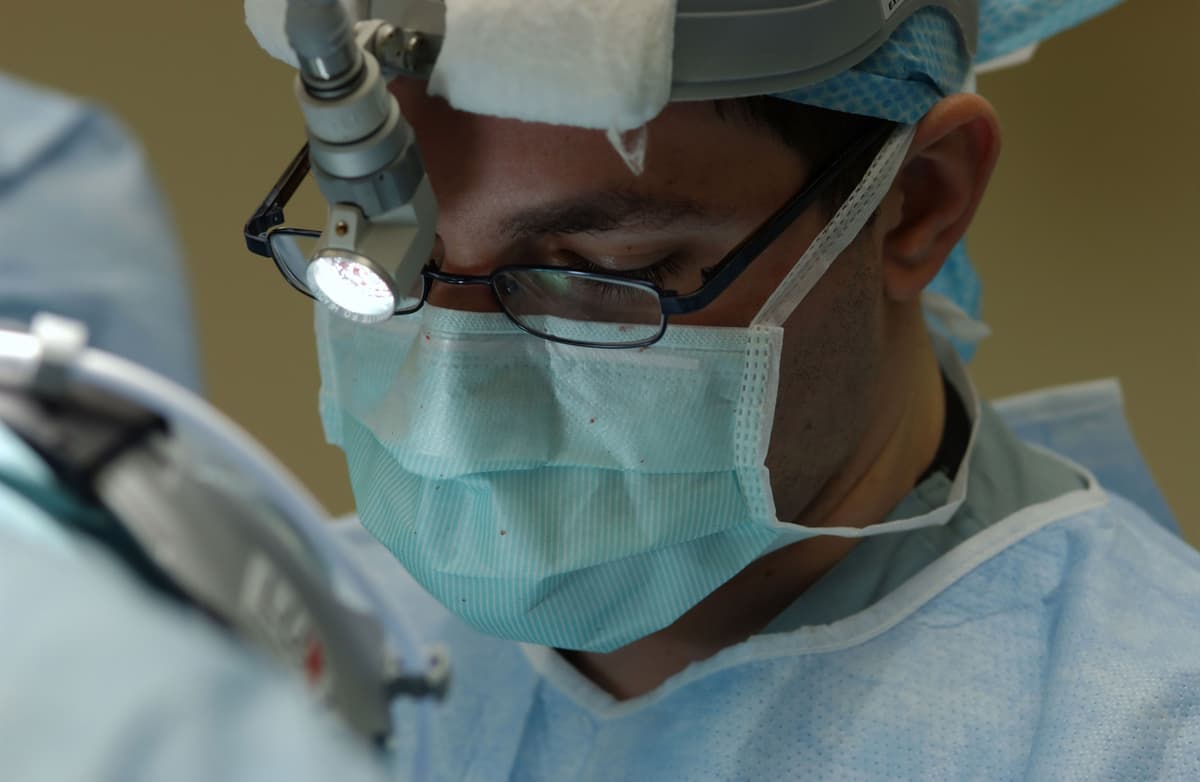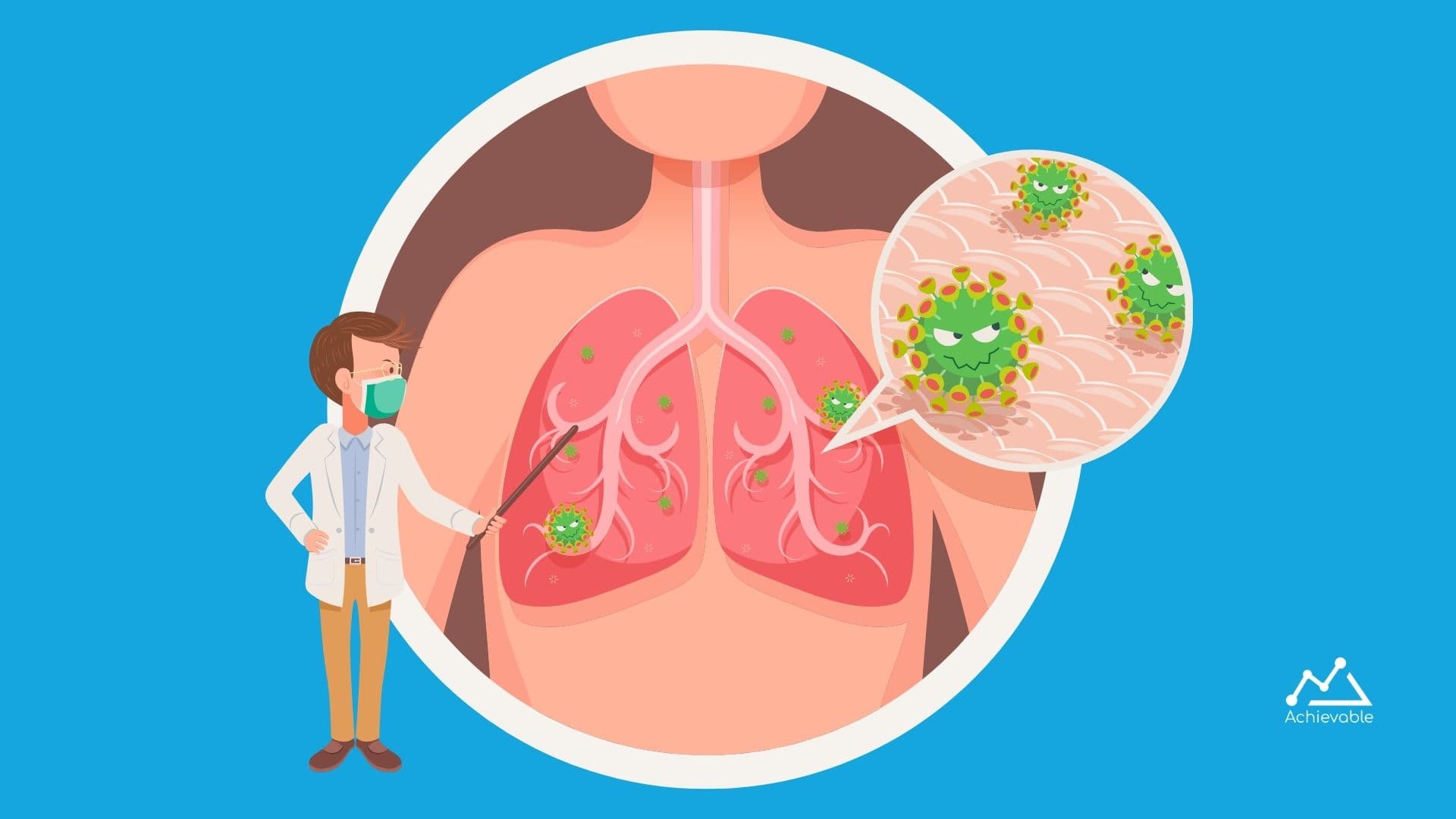
The medical profession is deep and wide – there are an incredible number of specialties to choose from and you could spend your whole career mastering just one. If you’re just starting to think about your medical specialty choice and career, we find it easier to organize your next steps by the fourteen program types you can apply to for your residency.
Below, we dig into each program:
We organized these by mean USMLE Step 1 score from lowest to highest, so you should read these in the same way. Family Medicine is the least competitive (note: still very competitive) program to get into, while Dermatology and Plastic Surgery are the most competitive and difficult to get into.
Let’s begin.

Mean USMLE Step 1 Score: 220
Average US salary: $207,550
A family medicine doctor is the first point of consultation for any health problems. They are responsible for dealing with returning patients and families without age restrictions. From infants to elders, from during birth to geriatric years, family doctors are highly trusted. The routine of a family doctor includes treating common colds and coughs for infants/ children, diabetes, hypertension for adults, and palliative care for older people.
Other responsibilities are coordinating services and follow-ups, networking with specialist doctors, hospital care, community-level analysis, etc.
Family medicine doctors often experience a higher level of flexibility and enjoy a balanced life between profession and home.
Mean USMLE Step 1 Score: 226
Average US salary: $230,133
Psychiatry is the education of diagnosis and treatment of disorders that are closely linked to the mind and the body of a person. With this residency, Psychiatrists combine traditional medicine with body practices like yoga, meditation, and other spiritual procedures to treat patients with mental illness. This kind of psychiatric treatment is commonly called Psychotherapy, where Psychiatrists meet the patients regularly and diagnose the improvements, moods, problems, etc.
People often confuse a psychologist and a psychiatrist. Psychologists only treat the patients and do not usually medicate, unlike Psychiatrists. Also, Psychologists do not undergo a Medical School education.
Qualities of a good psychiatrist include: empathetic, flexible, approachable, communicative and responsive.
The American Board of Psychiatry and Neurology is the regulating authority of this field, but you still need to pass the USMLE as part of your application process for residency.
Mean USMLE Step 1 Score: 227
Average US salary: $203,769
The word pediatrics has its origin in the Greek, meaning “Healer of Children.” Pediatrics deals with the education of healthcare of individuals falling under the age of 21 years. This age group includes newborn babies, adolescents, and young adults.
As there is no input on how the pain or the problem persists from the mouth of the patients (children), it is challenging for Pediatricians to diagnose and treat the illness typically. Obesity in childhood and an increase in pediatric neurological disorders have led to the rise in the opportunities for Pediatricians.
Individuals who like being around babies/children, love to hug, politely talk to parents in detail, are well-suited for Pediatrics.
Author’s note: The average USMLE Step 1 score is 229 – you are here.

Mean USMLE Step 1 Score: 230
Average US salary: $288,501
OBGY stands for Obstetrics and Gynecology. Obstetrics is education dealing with childbirth, whereas Gynecology is the education of women’s reproductive health. Any person can become a gynecologist without being an obstetrician. But, an obstetrician must also maintain their expertise as a gynecologist.
OBGY generally works in the labor wards of hospitals, observing mothers and babies. Many OGBYs love this aspect as they own the responsibility to protect their lives and timely make the right decisions.
Specialties under OBGY include infertility, pregnancy, and gynecological oncology.
Mean USMLE Step 1 Score: 232
Average US salary: $391,800
Anesthesiology is the branch of the medical field that deals with anesthesia and related decisions before any surgery. Anesthesia maintains the patients in an unconscious state, letting them not feel the pain of the surgery being undergone. Anesthesiologists closely examine patients’ various parameters to properly stabilize the controlled feeling, especially in intensive care and emergency units. Usually, either general or regional anesthesia is administered as required by the invasion methods and doctors that handle the surgical procedure.
It is universal that the demand for anesthesiologists never goes down as it is crucially essential for any surgery or relief from pain. More than 40 million surgeries are happening worldwide every year, so there is plenty of demand for anesthesia services.
Important to note: it is recommended that anesthesiologists take out expensive practice insurance to protect them in the event of a mistake or unforeseen circumstance arising at work.
Mean USMLE Step 1 Score: 233
Average US salary: $290,200
Emergency medicine is a branch of the medical field that equips the students with skills that are required to take care of the patients at very urgent or crucial healthcare needs. This program is also called the purest form of rapid diagnosis. Emergency medicine doctors deal with the symptoms of the patients and coordinate with specialist doctors to further decide on the treatment plans.
The routine of an Emergency Medicine Doctor includes monitoring or reviewing the patients in an emergency or intensive care unit, dealing with newly admitted emergency patients with trauma, heart attack, stroke, etc. During the residency program, students are given with simulations that materialize the emergency scenarios.
Emergency doctors must be able to think and process the given and observed date quickly, decide quickly, stay calm even under stressful situations, not get distracted, maintain attention to details, and be careful with high energy levels.
Students, however, shall undergo training in various areas like emergency medicine, gynecology, immunology, etc. in their Medical School. Post Medical School education, applicants must get certified, passing the licensure examination to take up the residency program.
Mean USMLE Step 1 Score: 233
Average US salary: $221,335
Internal Medicine doctors, also called Internists or Physicians, handle adolescents’ and adults’ illness, diagnosis, and treatment to non-surgical disorders. These doctors apply their scientific knowledge whilst caring for the illness of the adults and provide superior primary care before being forwarded to any specialists.
Although internists provide primary care, they are not general physicians, family physicians, or practitioners; as these category doctors do not focus or concentrate only on adults’ illness education. A few internists specialize in hospital settings and become hospitalists.
Generally, Internists are considered to have better work hours and work-life balance than other specializations. But this is only in comparison to other medical fields – every medical profession requires a lot of hard work.
Subspecialties of Internal Medicine include Gastroenterology, Pulmonary, Cardiovascular, Nephrology, Transplantation, Hematology, Immunology, and a lot more.
Mean USMLE Step 1 Score: 233
Typical US salary: $279,500
Pathology is all about getting educated on observation and analysis of human cells, tissues, bone, or body fluids. Diagnosis post the death of a person is a crucial pop culture example, as a pathologist determines the cause of death in criminal cases.
The routine of a pathologist involves gathering information on their tests and analysis, diagnosing the disease, and helping the management take corrective decisions to care for the patients.
Pathologists enjoy wide opportunities in hospitals, clinics, and laboratories, along with reasonably balanced work-life. People often mistake that Pathology is all about Autopsies. But the truth is an autopsy is only a small part of Pathology education.
Students who do not have a medical degree, but have pursued their masters in Pathology, Microbiology, or Biochemistry have the opportunity to work with Pathologists as assistants.
The notable subspecialties of pathology include Hematopathology, Dermatopathology, and Cytopathology.

Mean USMLE Step 1 Score: 236
Average US salary: $396,767
General surgeon doctors deal with a variety of illnesses and diseases and primarily operate on the torso regions of the human body. The most common surgery involves operative procedures in the Stomach, Liver, Intestines, and Gallbladder.
A general surgeon’s routine begins with diagnosing patients with the help of various physical tests like CT scans, ultrasound, etc. and deciding the critical need for surgery. Once the surgery is decided, the patients’ strength to stand a surgery is examined, and pre-operative tests are prescribed. Post-surgery, they assess the recovery and medicate the operative pain.
The American Board approved surgery specialties include cardiothoracic, vascular, orthopedic, neurologic, endocrine, plastics and reconstructive, transplant, thoracic, urologic, pediatric, and many more.
A good general surgeon may have to be able to withstand hours of operative procedures and requires stronger stamina, unlike other doctors. In addition to stamina, they must have their hands steady with excellent coordination with eye and dexterity.
The most critical part is the survival of the patients after surgery. Some may survive, some may not, and this has to be boldly handled by the surgeon and the doctors’ team that assisted the surgery. Being calm and emotionally resilient may help in these situations.
Continuous learning about the new operative techniques, procedures, and tools is essential for a general surgeon.
It requires years of study to graduate in general surgery residency. A minimum of five-years is a must for a general surgeon. During the residency, the students will have to perform at least 750-1000 surgeries and a minimum of 25 critical surgical cases. Post extensive general surgery residency, a licensing is required to start their career as a general surgeon.
Mean USMLE Step 1 Score: 240
Average US salary: $417,890
Radiology is one of the most technologically focused fields in medicine. Radiologists study imaging techniques like X-rays, ultrasounds, radiographs, electromagnetic radiation, CT, radionuclide, etc. They analyze these results and give patients accurate diagnostics of their situation. A radiologist must act as a detective to post a lot of questions to themselves and check for various scenarios while observing the diagnostic results.
A diagnostic radiologist may choose to specialize in Nuclear Radiology, Pediatric Radiology, Neuroradiology, Hospice and Palliative Medicine, and Pain Medicine. After specializing, the graduate shall choose to become a Radiologist/ Diagnostic, Radiologist Assistant/Nurse, Diagnostic Physicist, or Radiologic Technologist.
A good diagnostic radiologist must be skilled in visual analysis, attention to details, analytical, problem solving, report writing, communication, and also show a general interest in Physiology, Anatomy, and Pathology.
The Radiology residency program lasts for five-years. Students, after medical school, begin to pursue their Postgraduate year 1 called the clinical internship/transitional year and then choose their radiology specialty from PGY2. It continues for up to PGY-5, with PGY-6 being optional for fellowships. However, most students undergo further education on sun-specialties or a fellowship to gain more knowledge and become strong to practice radiology.
It is a must to obtain required certification from the ABR (American Board of Radiology) or the American Osteopathic Board of Radiology (AOBR). In addition, state licenses, as per the respective states, have to be obtained. The ABR exam involves core (during PGY-4 and certifying (15 months after PGY-5 or one year after PGY-6 if pursued) exams.
Mean USMLE Step 1 Score: 248
Average US salary: $491,190
An orthopedic surgeon is similar in difficulty and medical school investment to a general surgeon, but their focus is helping patients with musculoskeletal diseases and injuries. These doctors strive to get the patient relieved from the pain by giving medical, surgical, or physical treatments as required by the adversity of the condition. Usually, 50% of the time is spent on non-surgical treatment, and only a few surgeries happen.
Early practitioners of this specialty rarely have a consistent schedule or easy work-life balance as they need to be available almost all hours in a day to deal with patients. However, orthopedic surgeons are driven by helping patients recover and seeing their success.
Subspecialties of orthopedics include Joint replacements, Hand, Knee, Shoulders, etc.

Mean USMLE Step 1 Score: 248
Average US salary: $378,100
Otolaryngology is the study of ears, nose, and throat, also referred to as ENT. It is also called otolaryngology-head and neck surgery, as these doctors are specialized in both medicine and surgery. They are different from normal physicians/surgeons for the reason that they operate on the most fragile, delicate, and paramount tissues, i.e., the head and neck regions.
Otolaryngologists usually treat older people falling between the ages of 45 to 65. Yet, a few patients under 15 years of age nowadays visit these doctors owing to illnesses caused whilst or from birth.
Problems like nasal congestion, sinuses, hearing issues, allergies, disorders, ear infections, tumors, etc. are treated by Otolaryngologists. Doctors employ various treatment methods like medication, surgery, immunotherapy, reconstructive techniques, etc.
An ENT residency lasts about 5 years, with 3 years of Otolaryngology residency and the remaining 2 years of surgery and training. If a specialization is preferred, another 2 years of education have to be undergone.
Respective certification and license are required to practice the ENT.
Mean USMLE Step 1 Score: 249
Average US salary: $349,000
Dermatologists treat patients with skin (primarily), hair or nails, and the diseases caused due to their abnormalities. These doctors have studied both the medicine and the surgery methods of treatment.
Most often, dermatologists are presumed as only cosmetic surgeons. Nevertheless, cosmetic treatment is only a portion of the dermatology.
The routine of a dermatologist involves identifying the abnormality, medication, further analysis of surgery requirements, and administration.
A medical school graduate is required to pursue the Dermatology residency of about 3 years and earn the required licenses and certification to practice the clinical services on their own. However, they have opportunities to either work independently or get employed at hospitals, other clinical centers, etc.
Mean USMLE Step 1 Score: 249
Average US salary: $396,684
Plastic surgery is the study of physical defects, repair or replacement, reconstruction of the skin, hand, breast, musculoskeletal system, or the external genitalia.
Plastic surgery is considered aesthetic. However, it can also be used for non-vanity purposes to improve the body structures or give a new look to the patient needing the surgery. For instance, burn surgeons are plastic surgeons who provide critical care for those with burn injuries, wounds, or scars.
Plastic surgeons usually undergo simulation training in mice to gain experience. Most of the plastic surgeons, after residency programs, are found to practice independently with required certifications and licenses.
Applicants who have undergone education in general surgery, ENT, or neuro or orthopedics can apply for plastic surgery residency programs.
If you’re looking to embark on a career in medicine, you’ll need to pass the USMLE Step 1. Achievable USMLE Step 1 was developed by GraceUSMLE’s founder and one of the top USMLE instructors, Sujata Arecanteparamb, M.D. It includes everything you need for a top-percentile score on the USMLE Step 1, including: our easy-to-read online textbook, an unlimited supply of practice questions for review quizzes, and plenty of full-length practice exams.
Full access to the course is typically $299, but it’s on sale now for only $99 during the rollout phase – peek inside and see if Achievable USMLE Step 1 is a fit for you.

This video explains the changes seen in cardiac cycle tracings in valvular heart diseases. You can learn key features to help you differentiate normal from abnormal tracings in specific valvular disorders.

In this video Sujata explains the pathophysiology, diagnosis and management of pneumothorax. It is a high yield concept for all steps of the USMLE. Pneumothorax is of four different types and management is guided by the type and severity.

Fluid shifts between body compartments occur between the ECF (extracellular fluid) and ICF (intracellular fluid). It is determined by changes in osmolarity of ICF or ECF. The video explains the fluid shifts in different disorders and the types of volume contraction and expansion.